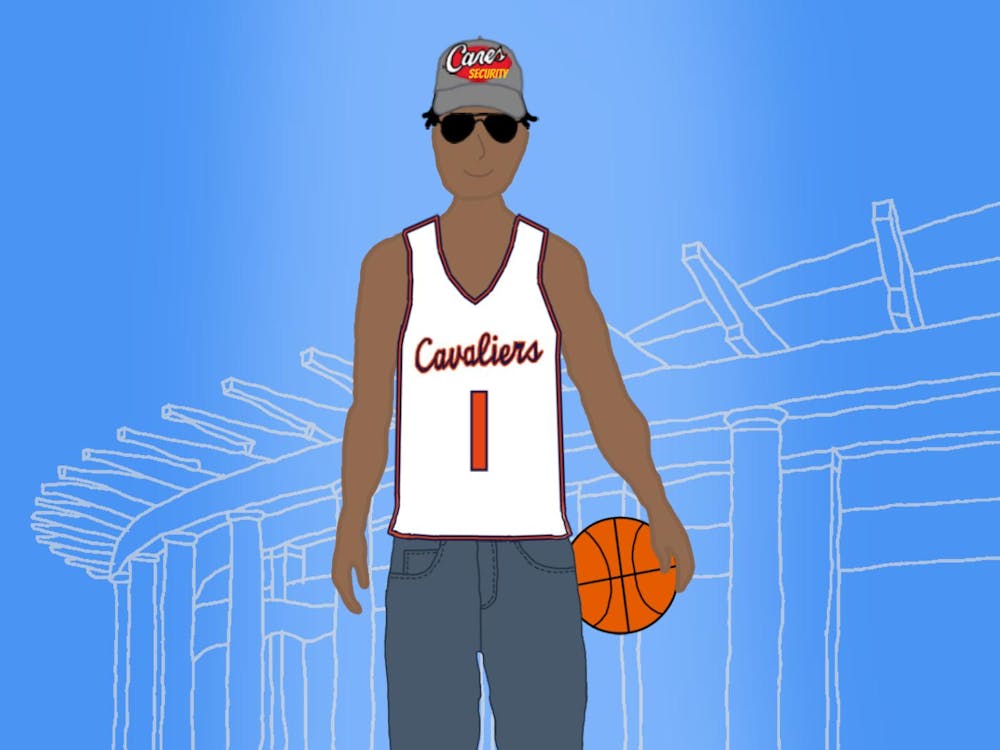Editor’s note: This article is a humor column.
As the leaves turn and pumpkin spiced lattes return, one thing is undeniable — cuffing season is back, and so is coughing season. Student Health officials confirmed the seasonal surge of Frat Flu, an illness notorious for its relentless symptoms and uncanny ability to outlast the average University romance. While weekend flings quickly fade, Frat Flu sticks around, leaving students with weeks of coughing fits and aching hearts that make them regret attending that overcrowded, sweaty frat party.
On average, 50 percent of partygoers are afflicted by Frat Flu at every party. Symptoms include a sore throat, phlegmy cough, stuffy nose, obsessive re-reading of text messages and irrational stalking of Instagram stories. In severe cases, victims experience hallucinatory notions such as “I’m never drinking again.” To get to the bottom of Frat Flu’s relentless grip on Grounds, epidemiologist Madi Bol offers an explanation.
“The Frat Flu phenomenon refers to the unavoidable sickness contracted from crammed, contagion-clogged and pathogen-packed frat parties,” Bol said. “Frat Flu hits both the body and heart. As Frat Flu weakens immune systems, it lowers emotional defenses too, leaving students vulnerable to both viruses and unpromising crushes. It’s far worse than the typical flu, leaving behind an unshakable cough that lingers longer than the Snapchat streak with your latest love interest.”
Frat Flu does not just attack your throat, it obliterates your soul — similar to waiting for the “You up?” text that never comes. In severe cases, it develops into catastrophic FOMO, an overwhelming Fear of Missing Out that compels students to attend every party, even when bedridden with regret. Ironically, this FOMO fuels the spread, turning frat parties into self-sustaining germ fests.
As reports pour in from across Grounds, many victims describe the flu’s persistence as “downright clingy” compared to the fleeting nature of University love. Despite the surge in complaints, Student Health’s response remains predictably underwhelming — drink more water, rest and hope for the best. It appears Frat Flu is here to stay, long after your crush has moved on. With no end in sight, The Cavalier Daily demanded answers from Student Health’s Dr. Streakda Laun.
“Frat Flu is just a part of college,” Dr. Laun said. “It’s not a pandemic. Honestly, it’s a rite of passage. Students need to drink more water and stop blaming frats for everything.”
Abandoned by Student Health, students are left wondering how Frat Flu continues to spread with such ease. As the illness wreaks havoc, relationship specialist Diff Moe suggests the true culprit lies in today’s romantic climate, where fleeting connections and contagious germs go hand in hand.
“Kids these days barely get to know each other before one of them ghosts the other. Honestly, it’s no surprise diseases like Frat Flu are spreading so fast — students are swapping more germs than phone numbers at these parties,” Moe said. “The only thing more contagious than Frat Flu is a DM left on read. It’s sad, really.”
The rise in ghosting, coupled with short attention spans and the tragic death of chivalry, has led to shorter talking stages and rapid transmission of diseases via Zyn-flavored and highly regrettable makeouts. Looking for a first-hand perspective from the fraternity community, The Cavalier Daily contacted Kyle McChug, brother of Phi Slamma Jamma.
“I don’t even know why they are blaming us for this. Like, we only have a couple hundred people at our house every night,” McChug said. “I usually only see people wipe powder off their nose, not snot. And most of us only cough when we hit the za too hard. I don’t think it’s because of some disease or whatever.”
McChug’s perspective is not uncommon. Fraternities refusing to acknowledge their role in spreading Frat Flu is as classic as their denial of hazing — both are treated like rites of passage that “build character.” Much like pledges are expected to endure endless humiliation in silence, the spread of Frat Flu is brushed aside, treated as just another inevitable consequence of frat life, right alongside hangxiety.
Reports indicate that the University’s doctors and nurses were unprepared for such an extensive surge, implying the next pandemic could be Frat Flu, formally known as Brovid-24. In an effort to overcompensate and do too much too late, Student Health insists that professors enforce a strict zero-absence policy until further notice. Apparently, unless you're on your deathbed or actively flatlining, Frat Flu isn’t a valid excuse to miss class — just keep coughing and carry on.
Meanwhile, as Frat Flu cases skyrocket, students wait for any real guidance. When asked for precautions, Dr. Seven Dee Harry offered advice.
“Doctors are scrambling to find a cure for this relentless ailment. We haven’t seen anything this persistent and contagious since the viral spread of the renegade dance,” Dr. Harry said. “We are working around the clock to provide the community with a protocol, but for now our best advice is to drink water, rest and, for the love of all things holy, stop expecting them to text you back — it’s not happening.”
Romances with frat boys quickly fizzle out, leaving students more disappointed and sick than smitten. As students continue to navigate the brutal realities of both Frat Flu season and University dating, one thing is clear — Frat Flu is here to stay, while your love life? Not so much.







